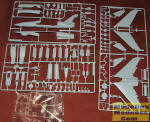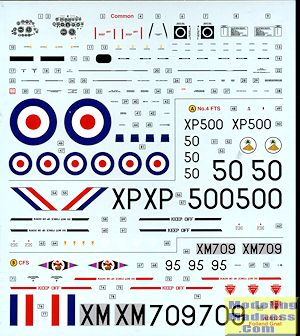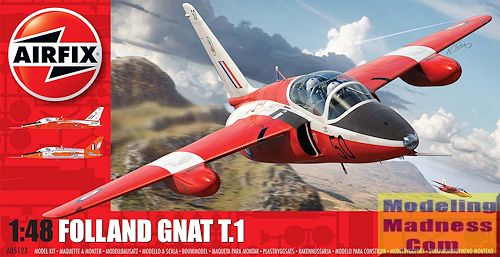The Gnat was the creation of W.E.W. "Teddy" Petter, a British aircraft designer formerly of Westland Aircraft and English Electric. Petter believed that a small, simple fighter would offer the advantages of low purchase and operational costs. New lightweight turbojet engines that were being developed enabled the concept to take shape. One of the hallmarks of the Gnat's design was its compact size. However, to achieve such a size, its systems were closely packed, making maintenance more difficult. Some of its systems were not noted for their reliability and the aircraft suffered from high operating costs. There were also issues that its cockpit was cramped and obstructed the instructor's forward visibility. Furthermore, the limited weapons load and reduced fuel capacity – both designed to reduce overall kerb weight – meant that it could not operate for protracted periods. Despite the shortcomings, the Gnat and its predecessor the Folland Midge were praised by the RAF evaluation and the test pilots. The lower cost of the Gnat, its compact dimensions, as well as "good press" for the aircraft in air shows, were among the factors that prompted a spurt in its export sales. Aircraft were sold to Finland, India and Yugoslavia with India having much success with their locally built 'Ajeet' aircraft. Many survive in museums and several are still airworthy.
Thanks to a dock strike in the US because workers don't think they can live on $83,000 to $147,000 a year (depending on which side provides figures), the usual shipment of Airfix kits has been grossly delayed with orders expected in December still not having been off-loaded. This means that most distributors still do not have stocks of these kits, though some have obtained them outside the Hornby USA pipeline. Such is the case with this one that came in last week to the LHS.
 Once the rather battered box was opened, I found three large grey sprues and one clear sprue. The molding is pretty typical of what has come out of India in the last several years. The exterior detailing is excellent with crisply done engraved panel lines. Some say these are finer than in previous kits, but they look about the same to me. Perhaps it is the difference in scale that makes them seem more petite as most of Airfix's offerings are in 1/72 and this is a 1/48 kit.
Once the rather battered box was opened, I found three large grey sprues and one clear sprue. The molding is pretty typical of what has come out of India in the last several years. The exterior detailing is excellent with crisply done engraved panel lines. Some say these are finer than in previous kits, but they look about the same to me. Perhaps it is the difference in scale that makes them seem more petite as most of Airfix's offerings are in 1/72 and this is a 1/48 kit.
The breakdown of the fuselage is a tad odd, but perhaps this reflects the need to use the same tooling for a single seat version. The nose gear well fits into an opening in the bottom of the cockpit tub and there is a separate forward and aft bulkhead. Rudder pedals, instrument panels and control sticks fill the cockpit. The two bang seats are fairly nicely done with different seat inserts, one with and the other without harness, the ideal being the one without the harness is for when you install the pilot figures.
The kit comes with complete intake runs that end in a compressor face. For this reason, there are long additional external intake sides to the fuselage which will fill in those huge openings you see on the sprue image. Also separate items are the main gear wells, which fit into the fuselage from the inside prior to gluing the halves together.
Since the plane has a 'shoulder' style wing, the entire upper wing is a single piece with the lower sections being separate and trapping the ailerons. Flaps are also separate and can be displayed extended if one wishes, Airfix providing two different parts, one for each option. There is also a separate right fin piece, this allowing the movable rudder to be trapped between the two sections.
Airfix designs all its new kits to be built with gear up, though you have to buy a stand separately. This is a great idea as many like 'in flight' displays. The kit's landing gear and doors are all very well done with the main wheels having separate outer wheel hubs to help with painting. The only 'things under wings' that are provided are scabbed on fuel tanks. You need to open holes in the lower wing earlier in construction to install these. The Gnat trainer almost always carried these.
 There are two other options with the kit. One is an opening nose compartment showing radios and the like, and the other is an open canopy option with a separate windscreen. A closed canopy piece is also provided. Though the instructions do not show any weight being needed, I would put some in the nose just to be sure as it looks like there is a lot of airframe behind the main wheels.
There are two other options with the kit. One is an opening nose compartment showing radios and the like, and the other is an open canopy option with a separate windscreen. A closed canopy piece is also provided. Though the instructions do not show any weight being needed, I would put some in the nose just to be sure as it looks like there is a lot of airframe behind the main wheels.
Instructions are nicely done with some color included to help out. Airfix only provides Humbrol paint numbers during constructions which is probably my biggest irritant with Airfix as they do not provide a conversion chart. For the outside you have two options. One is an early plane in silver and fluorescent red with the Central Flying School in 1964 while the other is in a red and white scheme with grey wing undersides from 4 FTS in 1973. This scheme was undoubtedly taken from one of the many warbird Gnats flying in the UK. Finding a different scheme will be difficult as there were few other markings in which this plane flew. The decal sheet is nicely printed, a bit matte and includes instrument decals for those of us who like using these.


 Once the rather battered box was opened, I found three large grey sprues and one clear sprue. The molding is pretty typical of what has come out of India in the last several years. The exterior detailing is excellent with crisply done engraved panel lines. Some say these are finer than in previous kits, but they look about the same to me. Perhaps it is the difference in scale that makes them seem more petite as most of Airfix's offerings are in 1/72 and this is a 1/48 kit.
Once the rather battered box was opened, I found three large grey sprues and one clear sprue. The molding is pretty typical of what has come out of India in the last several years. The exterior detailing is excellent with crisply done engraved panel lines. Some say these are finer than in previous kits, but they look about the same to me. Perhaps it is the difference in scale that makes them seem more petite as most of Airfix's offerings are in 1/72 and this is a 1/48 kit.  There are two other options with the kit. One is an opening nose compartment showing radios and the like, and the other is an open canopy option with a separate windscreen. A closed canopy piece is also provided. Though the instructions do not show any weight being needed, I would put some in the nose just to be sure as it looks like there is a lot of airframe behind the main wheels.
There are two other options with the kit. One is an opening nose compartment showing radios and the like, and the other is an open canopy option with a separate windscreen. A closed canopy piece is also provided. Though the instructions do not show any weight being needed, I would put some in the nose just to be sure as it looks like there is a lot of airframe behind the main wheels.